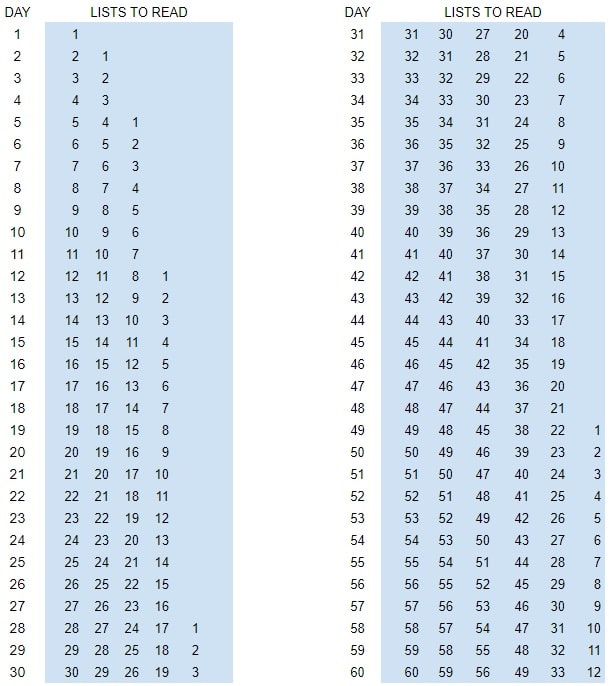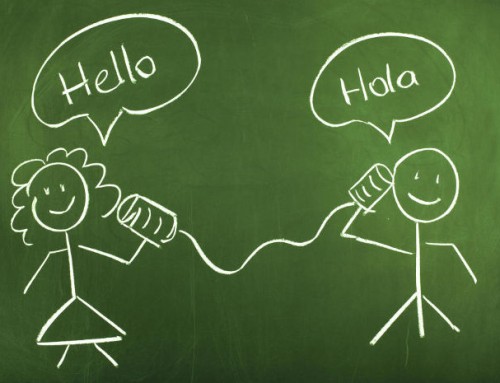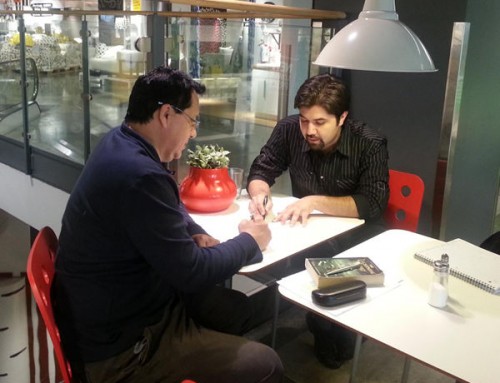First things first, we need to establish two important assumptions about your desire to learn another language. If you truly want to know how to learn a language fast, you should have no problem with these assumptions. They seem obvious, but I can assure you, they are not. Note: this post elaborates on the details of my previous post: 5 Steps to Learning a Language.
Assumption #1; you desire to communicate with people who speak that language.
Like I said, it seems obvious. But let me clarify what it means. To have a “desire” to do something implies that it’s stronger than a wish. And the manifestation of that desire will be some apparent effort on your part to fulfill this desire in spite of your limited ability to do it successfully. Practically speaking, as it pertains to learning a language, someone who desires to learn another language is already trying to have conversations with people in that language…even if they’re not very good at it.
20 years ago, I knew nothing about woodworking. I’d never built anything before. But that didn’t stop me from collecting a few basic tools and attempting to build a few things. My work was shoddy and imprecise. I hurt myself a few times…nothing serious. And I often had to scrap the whole project because it was just so terrible. I encountered many obstacles, but my desire to do that work powered me through the failures. I didn’t wait for a class. Even to this day, I’ve never had any training in woodworking. It wasn’t merely a wish, but rather, a real desire.
Dissecting Desire
“With whom are you currently trying to speak Spanish?”
This is one of the first questions I ask of my potential Spanish students. It sometimes catches them off guard. “How can I speak Spanish with someone if I haven’t learned to speak it yet?,” they sometimes reply. The purpose of my question is to gauge their level of desire.
Of course, the fact that they contacted me in the first place indicates that they do have some level of desire. But if they’re not already trying to speak Spanish with someone, it tells me they might be expecting some magical thing to happen during our classes…something that will enable them to have conversations in Spanish that will be free of errors, confusion and miscommunication. That, however, is not how it works. No language lesson or course is going to nullify the need to get out there and imperfectly use the few words and sentences you already know.
Assumption #2; you desire the ability to think in the new language.
Again, it seems unnecessary to make this point. But your answer to this question will reveal whether or not the strategies in this post are going to work for you. Do you find yourself trying to figure out how to say a word or a phrase in your target language? Do you look up words in a language dictionary? And do you repeat and practice the phrases you’ve learned in that language?
One of the most revealing things I notice about my new students is whether or not they bring their own textbooks to our first meetings. If they do, it’s a sure sign that they will greatly benefit from our lessons. These students are like seeds that are eagerly looking for soil in which to bury themselves so they can grow and develop. If I see they have completed exercises or written their own notes, I know they’re going to learn.
I hope that none of what I’ve written here is discouraging to you. I’ve been in this business for so long that I’m now at the point where I’d rather be blunt and honest with someone who’s not serious about learning. I’d rather encourage them to save their time and money and do something else. Another post I wrote directly addresses this situation; Maybe You Shouldn’t Learn Another Language.
How to Learn a Language Fast
If, on the other hand, you unquestionably demonstrate the desire I mentioned above to learn another language, then keep reading. The simple tactics I explain here will drastically accelerate your progress.
Just so you know, this post is the continuation of another post; How to Learn a Language. You may want to read that one first. In that post, I explain the 5 stages of language learning;
- Introduction / Exposure
- Learning / Accepting
- Practice / Exercise
- Daily Application
- Real Conversations
The key takeaway from that post is that the fourth stage, Daily Application, is where the real progress takes place. The first three stages occur in the classroom. For the student, these are passive stages. The student receives the lessons presented by the teacher. He follows the lessons, attempts to understand the concepts and participates in the exercises. These first three stages are mainly the responsibility of the teacher.
Keep in mind, however, that there are 168 hours in a week. The average student spends only 1 to 5 of these weekly hours with his language instructor. For some adult students, consistently attending one class per week is challenging. This fact alone reveals the significant limitation of instructors and their lessons.
Daily Language Application

There is only so much training we can cram into a student in such a small amount of time. More time with the teacher, however, is not a realistic solution. Nor is it necessary. The words and phrases learned during brief, occasional lessons are more than enough to equip a student to take the most important step of all; applying the language in his daily routine.
Application is without a doubt the #1 secret to learning a language fast. Ok so how do you apply a language?
“To apply a language is to proactively think and speak in that language throughout the day in order to establish and reinforce it into your consciousness.”
Right from the start, the usual objection to the thought of speaking in a foreign language throughout the day is that it’s not easy to arrange conversations with people who speak that language. Indeed, it’s not easy or convenient at all. Fortunately, however, chats like these are not what I mean by “daily application.” If you can have regular conversations with people who speak the language you want to learn, fantastic. Have those conversations as often as you can.

The problem with those chats, however, is that they’re not frequent or structured enough to help you make progress. Also, even though the people you chat with can effortlessly speak that language, they may not be able to teach or explain anything to you. That’s why you’re better off preparing for those chats on your own through daily language application.
The key dynamic of daily language application is a proactive effort to apply the pieces of the language you’re learning in your daily life. To facilitate this effort, we recommend a routine that will build upon the material you’re learning during your studies.
Exposure, Learning & Practice
We have now arrived to the nuts and bolts of how to learn a language fast. First of all, we’re assuming that the first 3 stages of language learning are already happening. Here they are again:
Introduction / Exposure
Learning / Accepting
Practice / Exercise
You’re engaged in some kind of class or self-study program which exposes you to new words and phrases (Introduction / Exposure). Some teacher, book or software is explaining these new pieces of the language to you so that they’re clear in your mind (Learning / Accepting). And then you must also complete a variety of exercises (written, verbal or both) to reinforce the new concepts and pronunciations you recently learned (Practice / Exercise).
These first three stages are crucial. However, if you’re doing nothing more than these classroom activities, your progress will be limited. You can definitely learn a language with only classroom training, but it certainly won’t happen fast. Something needs to happen between your lessons to reinforce what you learned during your lessons. Otherwise, you’ll spend the majority of each lesson relearning what you covered in previous lessons.
Sentence Lists

Your goal during each class or study session is to create lists of sentences…lots of them. They need to be relevant and personal. If you hear or learn a sentence during your class, it needs to go on your list. You can modify it however you wish to make it more applicable to you. Perhaps someone says “John’s tractor is red.” Well, John doesn’t exist. And no one you know owns a tractor. But let’s say you have a real friend named Steve and he has a red truck. So the sentence that goes on your list is “Steve’s truck is red.”
You certainly don’t have to make each sentence so personal. The key question to ask yourself is “Is that the kind of sentence I’d like to know how to say?” Also ask yourself if you would understand that sentence if someone said it to you. In other words, if you think you’ll benefit from practicing this sentence at a later time, go ahead and write it on your list.
Tamara
I once had a student named Tamara who totally got this concept. She took full advantage of it. I remember telling her in Spanish that I was “on the other side of the table” from her. She then proceeded to say in Spanish that the door of my office was on the other side of the room. She said that her husband’s job was on the other side of the city. And then she said that California was on the other side of the country. On and on she went with similar sentences.
After that, we launched into an engaging lesson in which we covered all the phrases related to proximity; “close to,” “far from,” “next to,” “on top of,” “under,” “to the left of,” “to the right of,” etc. When I met with Tamara again the following week, she had all those phrases down cold. She had written and repeated them at home without my help.
No Memorization Required
The sentences on your list can be totally random. They don’t need to go in any particular order. They don’t need to have a common theme or subject. You do, however, need to know what they mean. If you must, write the sentences in your familiar language in addition to your target language so you’ll easily remember their meaning. If you have any trouble thinking of new sentences, simply extract them from worksheets and textbook exercises you recently completed. Make sure they’re loaded with new verbs and vocabulary words that you’re trying to learn.
Once you’ve written ten sentences on your list, start a new list. Also, number your lists: “Sentence List #1”, “Sentence List #2”, etc. It’s critical that you make at least one new list per day. After doing this for 60 days, you should have 60 lists, etc.
Scheduled Reading
As you begin to accumulate a collection of sentence lists, you should then simply read your lists out loud according to the following reading schedule. Each day, read the new list you created that day (1st reading). Then read it again the next day (2nd). Then wait 3 days and read it again (3rd). Following that 3rd reading, you’ll read the list again a full week later (4th). Then read it again two weeks later (5th) and then one last time three weeks later (6th).
Over the span of 49 days, you will have read that one list of sentences six times. The purpose of this staggered schedule is to heavily establish those words and phrases early on. And then the latter readings reinforce them in your memory.
Of course, it won’t be easy to keep track of this schedule on your own. So therefore, I posted this simple schedule online to help you keep track of your reading. Click here to view the schedule. It looks like this:

No Memorization Required
Notice that I haven’t said anything about memorization as an exercise. No part of this routine requires that you force yourself to remember words or translate them in your mind. These are the typical tactics of students who merely wish to pass a test.
For a busy adult with a full schedule and many responsibilities, memorization is not the answer. In fact, it sets students up for failure. Even the most enthusiastic students won’t be able to maintain a routine of memorizing words over the long haul. It’s far more realistic and beneficial to make the routine a very simple affair that students can stick to; simple reading.
Just Read (or listen)
In the morning, at lunch or at the end of the day, just read your sentence lists. You’ll never have more than six lists to read. That’s 60 total sentences. You can do this. A couple of my students got in the habit of making audio recording of themselves reading their lists. Each of their lists is a separate recording. Throughout the day, as they drive around and do chores around the house, they listen to the audio clips they have scheduled for that day. That’s an excellent practice!









Leave A Comment